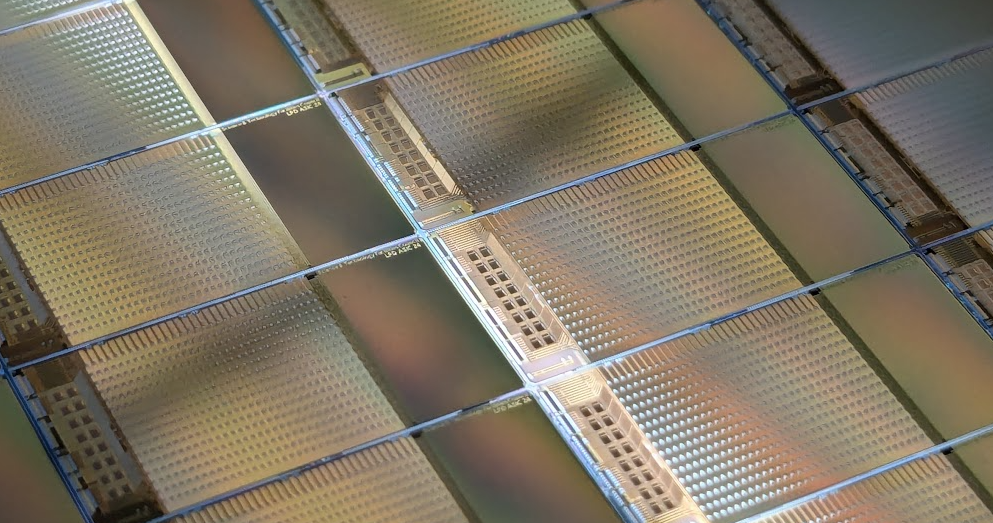 Matt with LPD at EUXFELIt generates ultrashort X-ray flashes 27,000 times per second with a brilliance that is a billion times higher than that of the best conventional X-ray radiation sources. As the world's largest X-ray laser, it is opening new areas of research that were previously inaccessible.
Matt with LPD at EUXFELIt generates ultrashort X-ray flashes 27,000 times per second with a brilliance that is a billion times higher than that of the best conventional X-ray radiation sources. As the world's largest X-ray laser, it is opening new areas of research that were previously inaccessible.
There are seven instruments available at the European XFEL facility, where scientists can map the atomic details of viruses, decipher the molecular composition of cells, take three-dimensional images of the nanoworld, film chemical reactions, and study processes such as those occurring deep inside planets.
One of the instruments is called FXE (Femtosecond X-ray Experiments). It enables ultrafast pump–probe experiments to be performed on timescales below 100 femtoseconds. This covers research fields as diverse as ultrafast chemical and biochemical dynamics of solution-phase samples, solid-state condensed matter physics, and nonlinear X-ray techniques.
FXE comprises two independent X-ray emission spectrometers that can be used simultaneously with a large-area 1 Megapixel detector (LPD 1M) for scattering studies.
The Large Pixel Detector (LPD) 1M is a hybrid pixel X-ray detector designed and built by STFC’s Detector and Electronics Division using the LPD ASIC developed by the ASIC Design Group. The ASIC is bump-bonded to a large pixel silicon detector that produces an electric charge when X-ray photons from the XFEL interact with the silicon.
 LPD ASICEach of the pixels that make up the 16 × 32 pixel array on the ASIC contain a charge sensitive preamplifier with a selectable gain of 1 or 10, designed to provide a maximum dynamic range of 105 12-keV photons per pixel per frame. Each preamplifier connects to a set of parallel gain stages providing ×1, ×10, and ×100 signal amplification. Due to the high repetition rate of the XFEL pulse train, all three gain-stage outputs for each pixel are stored in an analogue memory on the ASIC until they can be read out by the data acquisition system (DAQ) in the pause between the pulse trains. Sixteen on-chip 12-bit analogue to digital converters (ADC) are used to convert the analogue signals to a digital format for readout to the DAQ via 100 MHz LVDS outputs before the next pulse train arrives. The DAQ reduces the data volume by selecting the data from the most suitable gain range and rejecting the other two ranges.
LPD ASICEach of the pixels that make up the 16 × 32 pixel array on the ASIC contain a charge sensitive preamplifier with a selectable gain of 1 or 10, designed to provide a maximum dynamic range of 105 12-keV photons per pixel per frame. Each preamplifier connects to a set of parallel gain stages providing ×1, ×10, and ×100 signal amplification. Due to the high repetition rate of the XFEL pulse train, all three gain-stage outputs for each pixel are stored in an analogue memory on the ASIC until they can be read out by the data acquisition system (DAQ) in the pause between the pulse trains. Sixteen on-chip 12-bit analogue to digital converters (ADC) are used to convert the analogue signals to a digital format for readout to the DAQ via 100 MHz LVDS outputs before the next pulse train arrives. The DAQ reduces the data volume by selecting the data from the most suitable gain range and rejecting the other two ranges.
Matthew Hart, Project Lead, shared:
"Throughout my career, I have had the privilege to follow the development of the Large Pixel Detector (LPD) within the Technology Department’s Detector & Electronics Division.
"I joined STFC in 2007 as a graduate in the ASIC Design Group, where LPD was one of my first projects. Supporting the development of the ASIC was a great opportunity, especially so early in my career, enabling me to expand my network and contribute to such a major project.
"Once the LPD ASIC was developed, I transitioned to Detector Systems Software, spending five years on integration before LPD was delivered to our German collaborators at European XFEL. I then moved to the Detector Development Group, where I have continued to support LPD’s development.
"It has been incredibly rewarding to work with our international colleagues and see LPD become a foundation for molecular science. Now, our team is developing additional components for the detector to ensure its continued success."
More on
EUXFEL,
Scientific Instrument FXE, and
LPD 1M
